The REopt® platform and web tool analyses can be applied to energy optimization projects that include renewable energy, microgrids, electric vehicles, energy storage, and combined heat and power.
Featured Projects
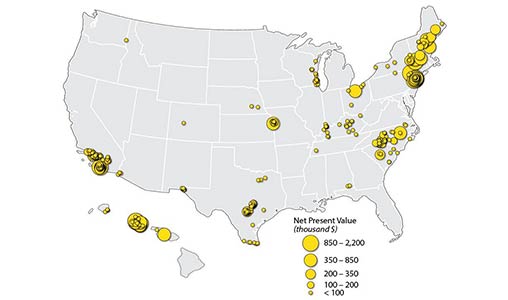
REopt Identifies and Prioritizes Renewable Energy System Potential Across Time Warner
Cable Facilities
Time Warner Cable partnered with NREL to perform a REopt analysis at 696 of its U.S.
facilities.
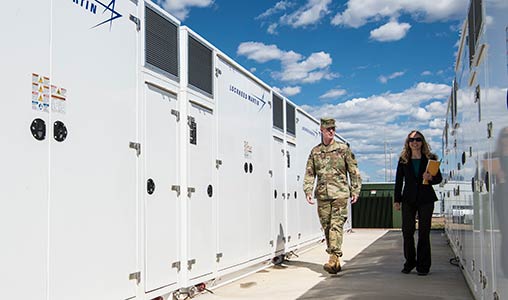
REopt Evaluates Savings Potential for a Load-Shaving Battery System at Fort Carson
NREL used REopt to review the savings potential and design of the battery energy
storage system, which reduces peak electric demand and improves the resilience of
Fort Carson's grid.
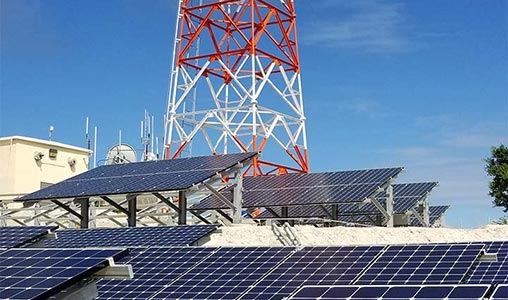
REopt Lite Verifies PV and Battery System Design at a Federal Communications Site
in Puerto Rico
U.S. Immigration and Customs Enforcement used REopt Lite® to verify economic viability and design specifications of photovoltaic (PV) and battery
storage.
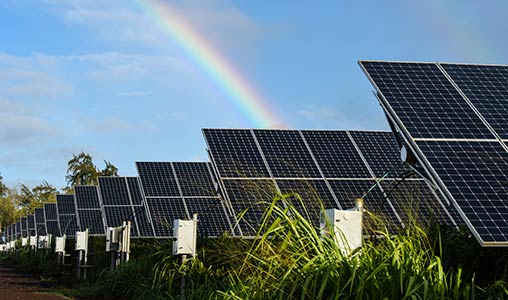
REopt Optimizes Hawaiian Residential Solar-Plus Technologies
REopt was used to optimize combinations of PV and “solar-plus” technologies for Hawaii
residential utility customers.
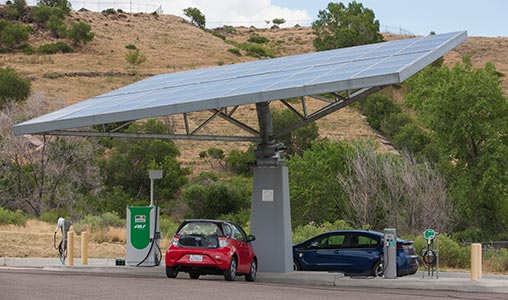
REopt Evaluates Electric Vehicle Charging Stations for the Vehicle Technologies Office
The Department of Energy Vehicle Technologies Office used the REopt model to evaluate
solutions to reduce operating costs of electric vehicle DC fast charging stations.
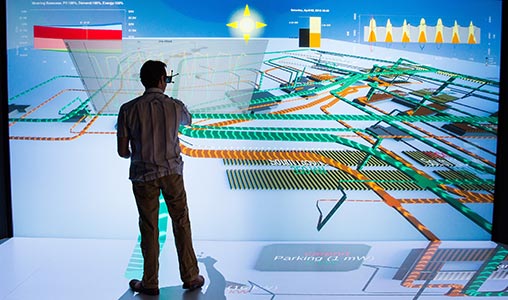
REopt Optimizes Real-Time Operation of NREL's Campus
NREL's Intelligent Campus project uses REopt to determine optimal dispatch strategies,
reduce operating costs, and increase efficiencies across multiple buildings and distributed
generation technologies.
Projects by Topic
The REopt platform has efficiently identified and prioritized renewable energy opportunities across portfolios of properties spanning multiple cities, states, or countries. REopt analysis is tailored to the individual energy requirements, costs, resources, and constraints of each client and site. The platform identifies the most cost-effective and technically viable ways to meet energy goals and the estimated costs to achieve them.
Evaluation and Prioritization of Renewable Energy Projects
- REopt Prioritizes On-Site Renewable Energy Projects for the Army and Navy
- REopt Identifies and Prioritizes Renewable Energy System Potential Across U.S. Time Warner Cable Facilities
- REopt Screenings Help Universities Assess Feasibility of PV and Battery Storage
Support for Campus-Wide Carbon Reduction Strategies
REopt evaluates how renewable energy and storage can be incorporated alongside conventional generation in grid-connected or off-grid microgrids to meet critical loads at the lowest life cycle cost. REopt optimizes system sizes and operating strategies to provide ongoing economic savings and extend site survivability during outages. REopt quantifies the resilience impact of renewable energy and storage in energy systems.
Microgrid Opportunity Analysis
- CU Boulder and NREL Use REopt To Explore Options for Boosting Energy Resilience with Campus Microgrid
- REopt Reveals Opportunities to Boost PV System Efficiencies, Halve Fuel Costs at Alcatraz
Evaluating Energy Storage for Resilience and Energy Security
- REopt Evaluates Energy Security Measures for the Department of Defense
- REopt Assesses the Value of Storage in Microgrid Design for DOD ESTCP
- REopt Demonstrates Economic Value of Solar Plus Storage in Bolstering NYC Grid Resilience
Remote Communities and International Projects
- REopt Models Economic Viability of High-Penetration Renewable Energy in Alaska Village
- REopt Evaluates Centralized and Decentralized Microgrids in Sub-Saharan Africa
- REopt Identifies and Evaluates Microgrid Options for the U.S. Army Garrison Italy
- REopt Supports Techno-Economic Modeling of Microgrids in Sub-Saharan Africa
- REopt Facilitates Solar Microgrid Scaling in Cameroon
REopt evaluates how energy storage can generate economic savings through demand reduction, time-of-use shifting, demand response, ancillary service markets, and frequency regulation markets. REopt models energy storage in integration with other assets and calculates system sizes and operating strategies to maximize economic benefit.
Residential Energy Storage
- REopt Optimizes Residential Solar-Plus Technologies Behind The Meter
- REopt Unlocks Distributed Energy Resource Potential in the Residential Sector: Findings From the Nova Analysis Project
Commercial Energy Storage
- REopt Helps Optimize Telecommunications Power for Verizon Wireless
- REopt Evaluates Savings Potential for a Load-Shaving Battery System at Fort Carson
Solar Plus Storage
- REopt Evaluates Commercial Solar Plus Storage
- REopt Identifies Solutions To Improve Economics of Large-Scale, Grid-Integrated Solar in New York City
- REopt Evaluates the Economic Potential of PV Plus Battery Storage at a Military Base in California
Utility-Scale Storage
The REopt web tool empowers energy and facility managers to identify, evaluate, prioritize, and plan their most economically viable renewable energy and energy storage opportunities.
The REopt platform evaluates solutions to reduce operating costs of electric vehicle DC fast charging stations, including coupling stations with energy storage and distributed solar photovoltaic generation, and colocating them behind the meter of existing commercial loads.
REopt evaluates how water treatment and storage systems can be leveraged for economic savings through demand reduction and time-of-use shifting. REopt looks at water treatment and storage in integration with other energy assets and calculates system sizes and operating strategies to minimize life cycle costs.
NREL continues to expand the application of the REopt platform to new areas, including combined heat and power, energy efficiency and renewable energy optimization, demand management, nuclear-renewable hybrid system optimization, and model predictive control.
Need help with an energy optimization project?
Email REopt@nrel.gov with questions about using REopt to optimize energy systems at your site.
Share
